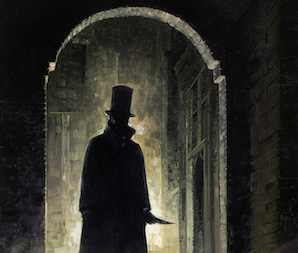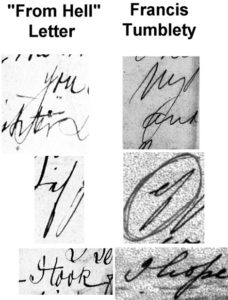
Was “Jack the Ripper” really “Frank the Ripper”?
Recently, The History Channel explored the findings from my book, “Sex, Lies and Handwriting” on a special about London’s most notorious serial killer. On the segment, I explained why newly discovered physical handwriting evidence points to an American Indian herb doctor named Francis (Frank) Tumblety.
More than 120 years ago, in the fall of 1888, a serial killer stalked the Whitechapel district of London's East End, brutally killing at least 5 women. The London police sifted through more than 700 letters from writers claiming to be “Jack the Ripper.” As a handwriting expert and criminal profiler, I believe that only one letter was not a hoax and had all the handwriting characteristics that would be found in the script of a lust murderer. That letter, which was delivered to a local businessman in a cardboard box (along with half a human kidney) was not signed “Jack the Ripper.” Rather, it was signed “Catch me when you can” with the most unusual return address: “From Hell.”
In the Fall of 1888, Scotland Yard arrested Tumblety for the Whitechapel murders. As part of their investigation, Scotland Yard requested handwriting samples from police in the United States. However, Tumblety fled England after a judge released him on bail, and. Tumblety’s file disappeared. Over the last several years, I’ve been able to locate a number of samples of Tumblety’s handwriting, including original letters from a collection on the Isle of Man.
Let’s compare Tumblety’s writing to the “From Hell” letter. In both scripts, the extra large loops of the "y" extend into the line underneath it. In fact, the “y’s” are so exaggerated that they not only violate the line underneath them, they actually penetrate the handwriting two lines below. A writer with lower zones like these can not stay within society's sexual boundaries. Ted Bundy’s writing shared this same characteristic.

A killer often places his weapon of choice in his handwriting. Notice that in both in Jack the Ripper’s handwriting and in Tumblety’s writing, the lower loop of the letter “f” resembles a scalpel.
When I compare handwriting samples, I look not only at the letter formations, but on the way letters and words are connected. Notice that both writers have unusual letter connections. Notice that the letter “I” connects into the following word. This strange connection connotes unusual thinking processes.
These are just a few of the many writing similarities that, I believe, prove that the killer known as “Jack the Ripper” was really “Frank the Ripper.”

